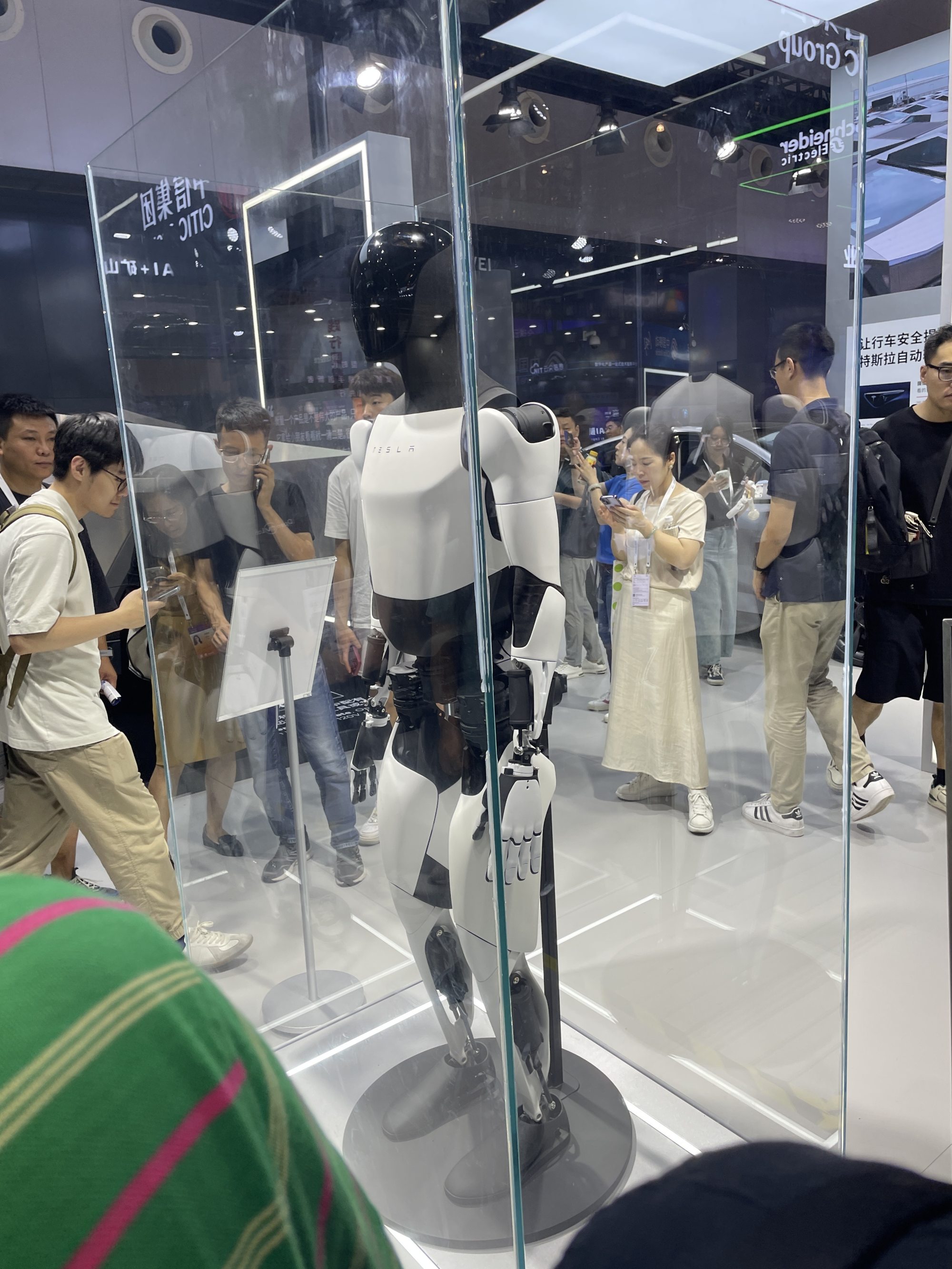Tesla shows its humanoid robot Optimus at China AI conference, but behind glass
The single Optimus shown at the Shanghai event attracted a lot of attention, even though it was behind glass, and did not move or interact with visitors. Tesla, meanwhile, promoted the humanoid robot on Chinese social media Weibo, asking the public to “witness the further evolution of humanoid robots”.

A total of 18 robots, including “Healthy Loong” developed by Humanoid Robots (Shanghai), were presented at the event.
Although humanoid robots have started to be used in China in sectors including education, entertainment, healthcare, elder care, and factory manufacturing, they are still in the lab research stage, according to representatives from the companies, and are not generating sales yet.
Despite being hyped as one of the most promising applications in the era of AI, the high costs of humanoid robots prevent them from being deployed on a large scale, according to an engineer at Tlibot, a company founded in 2012 in Mianyang, Sichuan province.
The engineer said a humanoid robot could cost between 500,000 yuan (US$70,000) and 1 million yuan, depending on the complexity of its functions. In comparison, Tesla’s Optimus is expected to sell for up to US$30,000.
Leju Robot showed its Kuavo robot powered by Kaihong OS, an operating system derived from Huawei’s OpenHarmony, an open-source OS for smart devices. Wu Changxuan, an engineer with Leju Robot, said that developing software systems for humanoid robots is more challenging than the hardware, as the company explores ways of widening its applications.